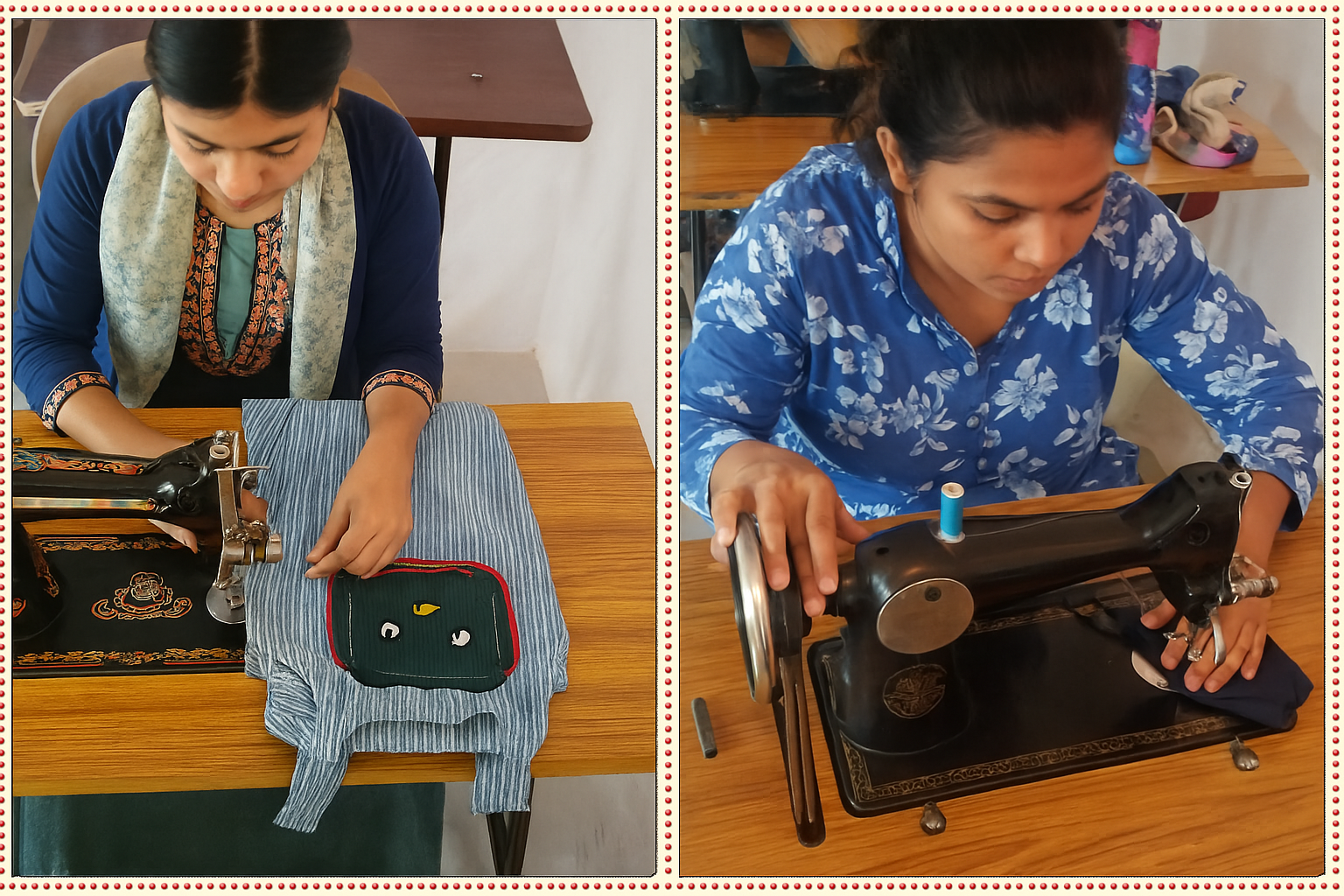Knowledge of stitching is a foundational skill for a fashion designer
Stitching knowledge is far more than a technical skill. It’s a powerful tool that allows fashion designers to bring their creative visions to life with precision and innovation. It influences everything from the fabric choice to the garment's durability, aesthetic appeal, and overall fit. It also empowers designers to communicate more effectively with other professionals in the industry, ensuring the final product is true to their artistic vision.
Knowledge of stitching is essential for designers because it forms the backbone of garment construction. When designers know how to manipulate fabric through different types of stitching, they can visualize the final product better. Whether it’s imagining how a lightweight fabric will hold its shape or how a more rigid material will behave, understanding stitching mechanics allows designers to decide which fabrics will best suit their design vision.
Different fabrics respond to stitching in unique ways—soft silks, for example, might need finer, delicate stitching, while heavier materials like denim might require stronger, more durable stitches. A designer’s knowledge of this relationship ensures that the design looks as intended, without losing integrity or style.
Designers with solid stitching skills can play around with fabric in ways that go beyond basic construction. By exploring different stitching techniques, they can manipulate the texture, shape, and drape of a garment. This enables them to create innovative designs that might not have been possible without such knowledge. The ability to experiment with different stitch types—like French seams for a clean finish, or bold topstitching for decorative effect—can transform a design from basic to unique.
A designer may start with a conceptual sketch, but without the know-how to execute it through proper drafting and stitching, that vision could fall apart in the creation phase. A solid understanding of stitching allows designers to bring their abstract ideas into tangible, wearable pieces.
During the prototype phase, stitching knowledge is crucial for refining a garment. Designers can make adjustments on the fly, experimenting with different stitches and sewing techniques to perfect the fit or aesthetic. If a part of the design doesn’t sit right or doesn’t perform as expected, they can alter the stitching to provide better structure or flexibility.
A designer’s awareness of how to reinforce areas with stronger stitches or add decorative touches ensures the final product is both functional and visually appealing. For example, adding double stitching in high-stress areas can increase the garment's durability, while delicate hand-stitched details can elevate its luxury.
Designers who understand stitching techniques can articulate their ideas with much more precision when communicating with pattern makers, sewers, and manufacturers. This is vital because a miscommunication at this stage could lead to costly mistakes or the loss of the designer’s vision.
Designers can provide specific instructions on seam allowances, stitching types, and finishing techniques—such as using a blind hem or overlocking to prevent raw edges from fraying. This reduces the likelihood of errors and ensures the garment is constructed exactly as envisioned.
The quality of stitching directly affects the fit of a garment. For example, the way a seam is constructed or how a dart is stitched can drastically alter how a garment sits on the body. A designer who knows how to manipulate these details can create clothes that fit like a glove, improving both comfort and appearance.
Properly placed seams and finishing techniques contribute to the visual appeal of a garment. Designers who understand these principles can decide where to place seams for the most flattering effect, whether that’s along the waistline or through the back. Finishing touches, like topstitching or bias binding, can add a polished, professional look that makes the garment feel high-end.
While traditional stitching methods are important, designers who understand these techniques can also push the boundaries of fashion. This allows them to innovate, creating new stitching patterns that make a garment stand out. For example, using embroidery to create intricate textures or employing unique stitch types in unusual places can bring a fresh perspective to a design.
Designers can also experiment with stitching to find more sustainable methods of garment construction. For example, by understanding how stitching can reduce waste or enhance garment longevity, designers can make informed choices that support eco-friendly fashion without compromising style.
Ultimately, knowledge of stitching allows designers to move from conceptual sketches to actual garments with confidence. Whether creating a ready-to-wear piece or an haute couture collection, they can make educated decisions at every stage of the design process. Stitching is not just about putting fabric together—it’s about turning a creative idea into wearable art, with every stitch contributing to the garment’s function, fit, and aesthetic.
Dr. Ruchi Mital
Principal
Ruchis Institute of Creative Arts [POLYTECHNIC]
